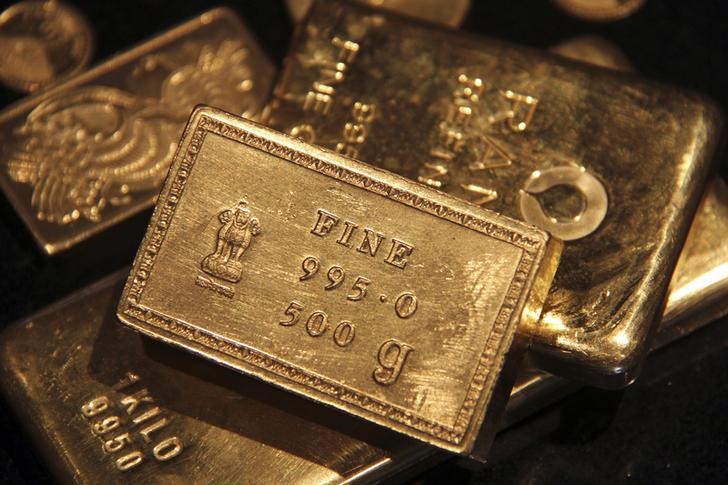Investing.com -- It’s not just risk assets that are getting clobbered amid the U.S. debt crisis.
Gold, supposedly a hedge against economic and political troubles, settled below $2,000 the first time since the beginning of May and after its rally to record highs, as investors fled instead to the relative safety of the dollar and U.S. Treasuries on mixed U.S. economic data that showed retail sales and the housing index holding up.
Gold for June delivery on New York’s Comex settled at $1,993 an ounce, down $29.70, or 1.5%, on the day, after a session low at $1,989.25 . It was the first close beneath the $2,000 perch for the benchmark gold futures since May 1. The June gold contract hit an all-time high of $2,085.40 on May 4.
The spot price of gold, which reflects physical trades in bullion and is more closely followed than futures by some traders, was at $1,987.62 by 13:40 ET (17:40 GMT), ten minutes after the settlement of futures trading. That was down $28.84, or 1.4%, on the day for the spot contract, which hit a session low of $1,985.59 earlier. On May 4, spot gold hit a record high of $2,073.29, according to Investing.com data.
Gold’s swoon came as the Dollar Index steadied above 102 and the yield on the 10-year U.S. Treasury note hit a two-week high of 3.572%.
While a breakthrough hasn’t happened yet in Washington’s debt-ceiling standoff, there is increasing chatter about what could go into a bipartisan deal that ends the stalemate and avoids a market-shaking default. A second round of debt-ceiling talks between the White House and the top four U.S. lawmakers was scheduled at 15:00 ET.
“Gold is lower as Wall Street awaits a meaningful update with debt ceiling talks,” said Ed Moya, analyst at online trading platform OANDA. He also noted that the yellow metal “did not get any favors from an April rebound in consumer spending.”
Moya said Wall Street is “bracing for something bad to happen”.
“But no one has an idea on what will be that catalyst,” he said. “ It could be a debt ceiling impasse, persistent banking fears, or a much weaker consumer as sticky inflation becomes more noticeable.”
“The soft landing hopes [for the U.S. economy] are still hanging onto a thread and that is keeping some investors from going aggressive into safe havens. Too many risks remain on the table for investors to go offensive. Risk aversion could get a boost from regional banking fears, debt ceiling drama, and a weakening consumer, but it will likely come from a new catalyst.”
More importantly, a study of Tuesday’s trading charts and the tumble to below $2,000 an ounce didn’t suggest that the upside that took gold to record highs was over, said Sunil Kumar Dixit, chief technical strategist at SKCharting.com.
“I don't see any major violation of the primary uptrend so long as the metal stays above $1,975 on a weekly closing basis,” said Dixit.
The correction was more as “momentum distribution,” with the $2018-$2,080 level becoming a resistance now for gold, which sits below the Daily Middle Bollinger Band of $2,008, he said.
